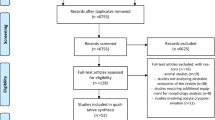Abstract
Purpose
This study compared the impact of using the Steiner-Tan pseudo double lumen needle for antral follicle oocyte retrieval to using a conventional non-flushing needle. The Steiner-Tan needle has a much smaller dead space than the needles commonly used for IVM oocyte retrievals.
Methods
This was a retrospective cohort study. The patient population was determined by the time period in which a patient underwent IVM in a single physician’s IVF practice. The following data was abstracted from clinical and embryology records: oocytes retrieved, oocytes matured, early maturing oocytes, oocytes fertilized, embryo quality measures, retrieval time, needle punctures, clot formation, and clinical pregnancy rate.
Results
The Steiner-Tan needle did not increase the number of oocytes retrieved. It also did not increase the time required for retrieval. However, flushing of antral follicles significantly decreased clot formation in fluid aspirates. Use of the Steiner-Tan needle also significantly decreased the number of vaginal needle punctures during each case. There was a trend toward improved embryo quality, but statistical power was inadequate to show a difference.
Conclusions
The primary benefit of the Steiner-Tan needle was on the embryological aspects of IVM. Decreased blood and blood clots in the aspirates made an IVM retrieval more like conventional IVF for the embryologist. The patient also experienced less tissue trauma without increasing anesthesia or surgical time. There was no improvement in the number of oocytes retrieved, but based on the results, we hypothesized that oocytes were more commonly retrieved from slightly large follicles than when using a routine needle.

Similar content being viewed by others
References
Cha KY, Han SE, Chung HM, Choi DH, Lim JM, Lee WS. Pregnancies and deliveries after in vitro maturation culture followed by in vitro fertilization and embryo transfer without stimulation in women with polycystic ovary syndrome. Fertil Steril. 2000;73:978–83.
Chian RC, Gulekla B, Buckett WM, Tan SL. Priming with human chorionic gonadotropin before retrieval of immature oocytes in women with infertility due to the polycystic ovarian syndrome. N Engl J Med. 1999;341:1624–6.
Child TJ, Phillips SJ, Abdul-Jahil AK, Gelekli B, Tan SL. A comparison of in vitro maturation and in vitro fertilization and embryo transfer for women with polycystic ovaries. Obstet Gynecol. 2002;100:665–70.
Crane MM, Divine GW, Blackhurst DW, Black CL, Higdon HL, Price TM, et al. Conclusions about the effects on fertilization of time from aspiration to incubation and blood in the aspirate depend on the use of appropriate statistical techniques. Fertil Steril. 2004;81:1548–53.
Dal Canto M, Brambillasca F, Renizini MM, Coticchio G, Merola M, Lain M, et al. Cumulus cell-oocyte complexes retrieved from antral follicle in IVM cycles: relationship between COCs morphology, gonadotropin priming and clinical outcome. J Assist Reprod Genet. 2012;29:513–9.
Daya S, Kohut J, Gunby J, Younglai E. Influence of blood clots in the cumulus complex on oocytes fertilization and cleavage. Hum Reprod. 1990;5:744–6.
Gremeau AS, Andreadis N, Fatum M, Craig J, Turner K, Mcveigh E, et al. In vitro maturation or in vitro fertilization for women with polycystic ovaries? A case–control study of 194 treatment cycles. Fertil Steril. 2012;98:355–60.
Guzman L, Ortega-Hrepich C, Albutz FK, Verheyen G, Devroey P, Smitz J, et al. Developmental capacity of in vitro-matured human oocytes retrieved from polycystic ovary syndrome ovaries containing no follicles larger than 6 mm. Fertil Steril. 2012;98:503–7.
Hill MJ, Levens ED. To flush or not to flush follicles at oocytes retrieval? In: Sharif K, Coomarasamy A, editors. Assisted reproduction techniques: challenges and management options. Oxford: Wiley Blackwell Publishing Ltd; 2012. p. 232–5.
Junk SM, Yeap D. Improved implantation and ongoing pregnancy rates after single-embryo transfer with an optimized protocol for in vitro oocyte maturation in women with polycystic ovaries and polycystic ovary syndrome. Fertil Steril. 2012;98:888–92.
Jurema MW, Nogueira D. In vitro maturation of human oocytes for assisted reproduction. Fertil Steril. 2006;86:1277–91.
Levy G, Hill MJ, Ramirez CI, Correa L, Ryan ME, DeCherney AH, et al. The use of follicle flushing during oocytes retrieval in assisted reproductive technologies: a systemic review and meta-analysis. Hum Reprod. 2012;27:2373–9.
Schramm RD, Bavister BD. A macaque model for studying mechanisms controlling oocytes development and maturation in human and non-human primates. Hum Reprod. 1999;14:2544–55.
Son WY, Lee SY, Lim JH. Fertilization, cleavage and blastocyst development according to the maturation timing of oocytes in in vitro maturation cycles. Hum Reprod. 2005;20:3204–7.
Steiner HP. Optimizing technique in follicular aspiration and flushing. In: Chavez-Badiola A, Allahbadia GN, editors. Textbook of minimal stimulation IVF—milder, mildest or back to nature. New Delhi: Jaypee Brothers Medical Publishers Ltd; 2011. p. 98–102.
Waterstone JJ, Parsons JH. A prospective study to investigate the value of flushing follicles during transvaginal ultrasound-directed follicle aspiration. Fertil Steril. 1992;57:221–3.
Zhao JZ, Zhou W, Zhang W, Ge HS, Huang XF, Lin JJ. In vitro maturation and fertilization of oocytes from unstimulated ovaries in infertile women with polycystic ovary syndrome. Fertil Steril. 2009;91:2568–71.
Author information
Authors and Affiliations
Corresponding author
Additional information
Capsule The Steiner-Tan needle simplified IVM retrievals, but did not increase the number of oocytes.
Rights and permissions
About this article
Cite this article
Rose, B.I., Laky, D. A comparison of the Cook single lumen immature ovum IVM needle to the Steiner-Tan pseudo double lumen flushing needle for oocyte retrieval for IVM. J Assist Reprod Genet 30, 855–860 (2013). https://doi.org/10.1007/s10815-013-0006-1
Received:
Accepted:
Published:
Issue Date:
DOI: https://doi.org/10.1007/s10815-013-0006-1




